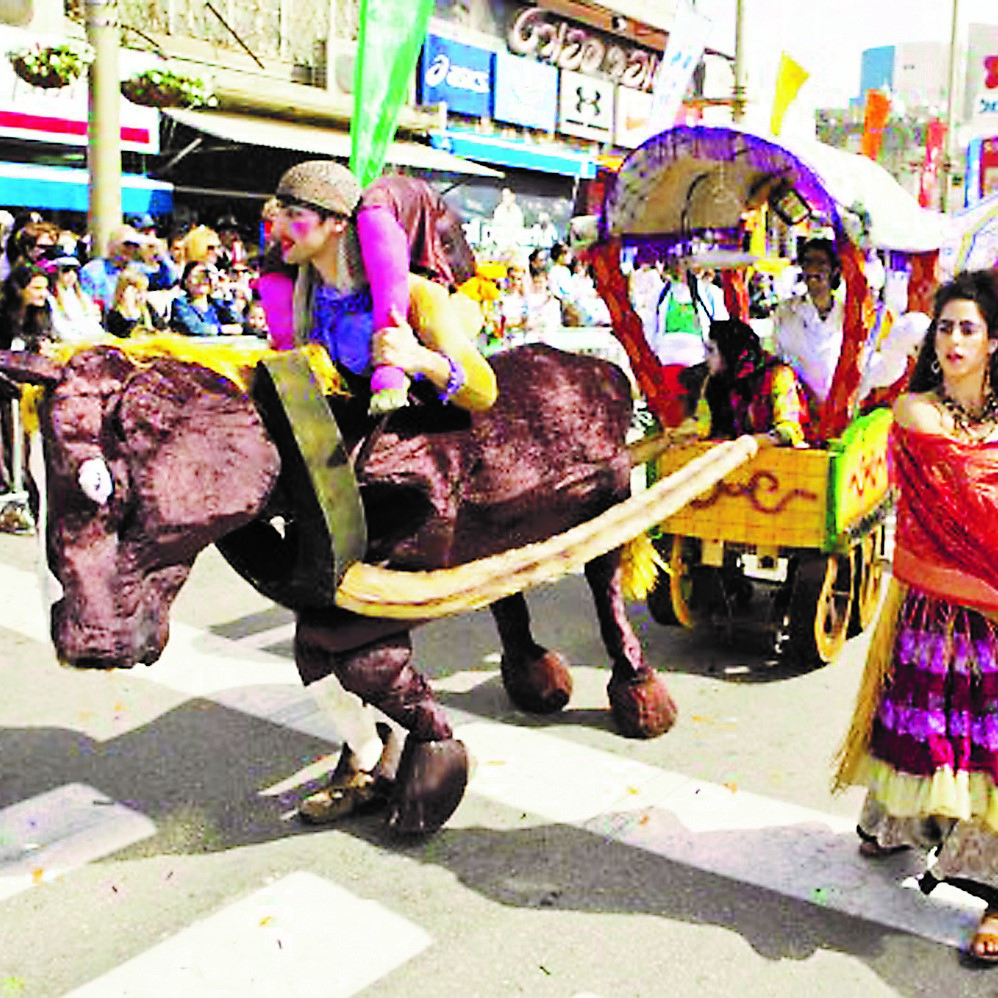
News

The world’s weird and wacky Purim customs
TALI FEINBERG
In Egypt, for example, young men ride through the streets on horses, camels, or donkeys, to recall the verse, “And they brought him [Mordechai] on horseback through the street of the city.” [Megillat Esther 6:11]. This is according to the book Purim Traditions in the Lands of the Galuyot.
Traditions like these existed before the Holocaust in Europe and before African Jewish communities migrated en masse to Israel after 1948.
When Jews lived in Iran, on the eve of Purim, children would make an effigy of Haman, and at night, they would pour oil on it and set it on fire. Iraqi Jews make a Purim pastry known as Sambusak El Tawa, filled with chicken and vegetables.
Iraqi Jewish children were excused from school, and over a period of two days, they would attend six parties involving spectacular dinners and lunches for family and friends. Iraqi Jews, like most mizrahi Jewish communities, also traditionally gave children presents for Purim.
When Jews lived in Yemen, they dragged a Haman scarecrow through the streets. They would also find a cactus with many branches, spread the heads in a row, and call it “the 10 sons of Haman”. They would then bury them in a grave or throw darts at them so that they would leak milky juice, saying that these were the tears of Haman begging for forgiveness, but he didn’t deserve it.
Iraqi and Yemenite Jewish communities didn’t have a tradition of dressing up for Purim or making a lot of noise when Haman’s name was mentioned. But when members of these communities emigrated to Israel, they adopted these Ashkenazi Purim traditions.
India gets special mention in the first line of Megillat Esther which reads, “It happened in the days of Achashverosh, he who ruled from India to Ethiopia, over 127 provinces.” Jewish women in India traditionally prepared biscuits from walnuts, almonds, and peanuts, and a sweet called Puran Poli, a mixture of boiled chickpeas, molasses, and cardamom powder, which is ground together and used as a filling for wheat dough. The dough is flattened into a thin, circular flat bread, and then baked on an open skillet.
In Morocco, they would bake sweet challot with hardboiled eggs inside. When they sliced the challah, they would say the eggs were the eyes of Haman.
In wintry Bukhara (Uzbekistan), a large “snow-Haman” was built near the synagogue. A “gold chain” of dried watermelon peels was hung over his stomach, and a broken pot was placed on his head. After the Purim feast, a bonfire was lit, and everyone gathered to sing while Haman melted.
In Germany on the eve of Purim, torches containing gunpowder would be ignited. During the Megillah reading, the gunpowder exploded with a deafening noise. In one town in Germany, two candles would be lit in the synagogue. One was called Haman and the other Zeresh (Haman’s wife). The candles were allowed to burn down completely.
In Italy, youngsters are divided into two camps, and throw nuts at each other. In Greece, Haman-shaped cakes are baked and placed on window ledges until the festive Purim meal. During the meal, the cakes are sliced and eaten. In Algeria, wax candles were lit for the Purim meal, which children were invited to light.
In Tunisia, schoolchildren participated in burning an effigy of Haman. The younger children made small “Hamans” out of paper, and the older children made a large Haman effigy out of rags, old clothes, and straw. All the townspeople gathered by the school. A large bonfire was prepared, and everyone stood round it. After all the effigies had been thrown on the fire, salt and sulfur were added to it. All the participants stood around the fire, shouting, “Long live Mordechai, cursed be Haman, blessed be Esther, cursed be Zeresh!”
In the Caucasus area between the Black Sea and Caspian Sea, an area mainly occupied by Armenia, Azerbaijan, Georgia, and Russia, the women prepared blackened wood by the kitchen fire. When the men came home after the Megillah reading, they would ask, “What’s this?” and the women would reply, “Haman.” The wood was immediately thrown into the fire.




